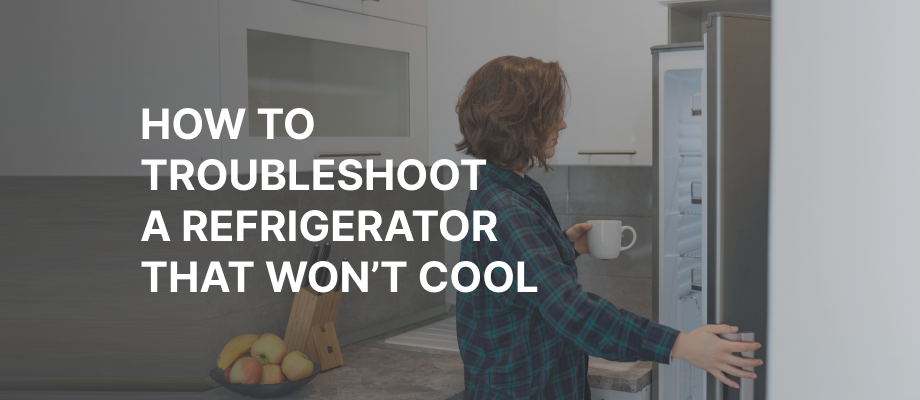
How to Troubleshoot a Refrigerator That Won’t Cool
When your fridge stops working properly, panic can set in fast — spoiled food, wasted groceries, and the stress of an unexpected repair. A refrigerator not cooling is one of the most common household appliance problems, and fortunately, it’s often something you can troubleshoot yourself.
In this guide, we’ll walk you through the most effective fridge not cooling troubleshooting steps — and help you know exactly when to call appliance repair for professional support.
Quick Checks Before DIY Troubleshooting
Before diving into complex fixes, start with the basics. Sometimes, a refrigerator cooling problem is caused by something simple.
1. Check Power and Settings
- Make sure the refrigerator is plugged in securely and that the circuit breaker hasn’t tripped.
- Confirm the thermostat is set to the correct cooling level (ideally around 37°F for the fridge and 0°F for the freezer).
- Test the outlet with another appliance to rule out power issues.
2. Inspect Door Seal and Placement
- Open the door and check if the rubber gasket (seal) is clean, intact, and creating a tight seal. Gaps or tears can let warm air in.
- Make sure your fridge is level and positioned properly — tilted units may cause the door to close poorly or allow airflow blockages.
Common DIY Troubleshooting Steps
If the basics are in order, it’s time for some hands-on fixes. These steps can often solve a refrigerator not cooling issue without needing a technician.
1. Clear Blocked Vents
Inside the fridge and freezer, ensure no food items or containers are blocking air vents. Obstructed vents prevent proper airflow, reducing cooling efficiency.
2. Clean the Condenser Coils
Dust and pet hair can clog the condenser coils, usually located on the back or underneath the fridge.
- Turn off and unplug the refrigerator.
- Use a coil cleaning brush or vacuum to remove dirt buildup.
- Do this every 6 months for optimal performance.
3. Inspect Fans
Your fridge has two fans:
- Condenser fan (bottom, near compressor)
- Evaporator fan (inside the freezer)
Listen for buzzing or rattling noises. If either fan isn’t spinning, or if it makes irregular sounds, it may need cleaning or replacement.
4. Reset the Unit
Sometimes, all it takes is a simple reset:
- Unplug the fridge from the wall.
- Wait 5–10 minutes.
- Plug it back in and allow 24 hours to see if cooling resumes.
When to Call a Professional
Some refrigerator cooling problems require expert attention. If the following issues persist after your DIY steps, it’s time to call in a refrigerator repair service:
- Signs of refrigerant leaks: oily residue near the coils, hissing sounds, or a constant warm interior
- Compressor problems: loud clicking, overheating at the back, or complete lack of cooling despite power
- Electrical issues: failed start relay, capacitor malfunction, or tripped circuit boards
- Repeated cooling failures: if your fridge works briefly after resetting but fails again, it likely needs diagnosis
How a Pro Can Help
Professional technicians are trained to safely identify and fix complex fridge issues:
- Diagnose accurately using gauges, meters, and temperature sensors
- Handle refrigerants legally and safely
- Replace damaged components like the compressor, control board, or defrost system
Calling a qualified refrigerator repair service saves you time, risk, and long-term costs from recurring problems.
Why Choose Call Now Appliance Repair
At Call Now Appliance Repair, we specialize in resolving refrigerator not cooling issues — fast and affordably.
Here’s why Roswell residents trust our team:
- Same-day appointments available for emergency repairs
- Certified technicians with experience across major brands
- Transparent pricing — no hidden fees, no surprises
- Verified customer testimonials and a 5-star reputation
- Locally owned and operated — we care about our community
Whether it’s a quick fix or a full compressor replacement, we’ll get your fridge back to working condition with care and efficiency.
Know When to DIY — and When to Call Now
If your fridge isn’t cooling, start with these practical DIY steps: check power, clear vents, clean coils, and inspect fans. But when these don’t resolve the issue, don’t wait — cooling problems can escalate quickly and cause food loss or further damage.